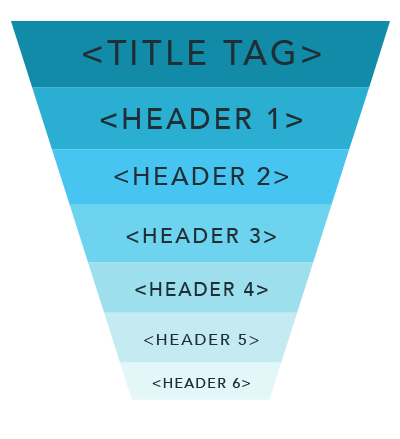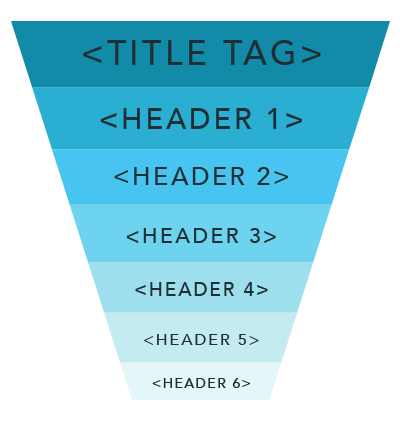How to Use Header Tags to Improve your SEO Strategy

Search Engine Optimization is all about driving organic traffic to your website. There are a number of factors that will influence your page rank for different search terms but ultimately a search engine is looking for the most relevant content for a particular search query.
In other words, if somebody searches “mountain biking”, the search engine is going to crawl millions of websites in search of the most relevant sites to this query. The text on your site is important, but web crawlers are going to prioritize URLs, Title Tags and Header tags first.
How Do Header Tags Work?
That’s why it is so important to make sure you use header tags (<h1> through <h6>) effectively. The best practice for thinking about this is to progress from broad to specific as you move from <h1> to <h2>, <h3> and so on. As you develop your SEO strategy, think of your website’s name as the title of a book. Each page has a title tag which functions as the title of a chapter, <h1> tags denote subtopics within the chapter and <h2> tags are even more specific – they describe only a couple paragraphs at most.
Let’s continue using our “mountain biking” example. Suppose you are a company that offers guided mountain bike tours in Estes Park, Colorado. We’ll call this company Matt’s Mad Mountain Adventures. You are going to want to create content on your blog that reflects your offering and appeals to your audience. You also want to make sure that search engines are able to find your site and rank you for searches that closely relate to that offering.
Imagine you’ve written a great blog post about the best mountain biking trails in Colorado to help drive traffic to your site. Here’s an example of the tagging hierarchy that would make sense for the company blog in this scenario:
Title Tag: Matt’s Mad Mountain Adventures Blog
H1: The Best Mountain Biking Trails in Colorado
H2: Best Bike Trails in Estes Park
This hypothetical company is not concerned with ranking for the search term “mountain biking”, but SEO experts will structure their title and header tags the way we’ve shown above so they can ensure that search engines will rank them for queries that are more specifically relevant to their offerings, like “best bike trails in Estes Park”.
The Header Tag Hierarchy
Think about the hierarchy as a funnel that goes from broad to specific:

If you are regularly posting great content to your blog on a regular basis (you should be!), you are probably already using bolded headers as titles for subtopics within a post.
In most cases, your Title Tag for the page will be the name of your blog, the <h1> tag should be the title of your blog post, and then the <h2> tags should be those section headers. In most cases, <h2> tags are also a great opportunity to utilize relevant keywords to make sure that search engines are finding your site when search queries match your offerings.
Optimizing Blog Content
In our example above, it would make sense to have multiple sub-sections that talk about mountain bike trails in various locations in Colorado, as the <h1> tag indicates. The section on Estes Park would contain one of our target keyword phrases “Best Bike Trails in Estes Park” as an <h2> tag.
The other sections would include information about other regions of Colorado even though we only operate in Estes Park. All of this information is useful to our target audience, so it’s a worthwhile post and the other <h2> tags would refer to other areas within the state. By setting up our blog and header tags in this fashion, we are ensuring that when our target audience (mountain biking enthusiasts in Colorado,) use a search query relevant to our offering, the search engine is going to find our content and drive that traffic to our site.
When thinking about SEO Marketing, you don’t only need to write great content for your audience, you also need to write for search engines. Now that you understand how to structure your header tag hierarchy, you’re ready to optimize your blog content and reach your audience more effectively than ever before!
Want help optimizing your blog or the rest of your content? Request a free SEO consultation today.

July 21, 2015
